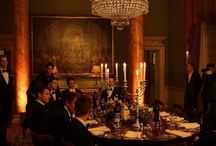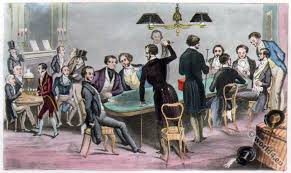The 19th Century Clubs:
Table of Contents
How was a Nineteenth-Century club / Victorian clubs?
Man is a social animal and from ancient times people have gathered in a place which later came to be known as ‘clubs’. Clubs became a requirement for people of same or similar interest to come together and form a sort of an organization. The word “club” denoted a cluster or a knot of people gathered together.

The clubs in old English days were generally used for casual gatherings and toasting drinks among people and friends. During the 18th century the English people were very fond of tea and coffee and therefore the culture of coffee houses was very prevalent back in these days.
These coffee houses attracted people who were financially unrelated to each other in a kind of social gathering and slowly the coffee houses took the form of ‘clubs’.
19th Century Clubs
There were two types of clubs. One was a permanent institution and another for people who showed an irregular presence. The permanent Clubhouses were mostly the ones attached to the coffee houses which had the increasing number of members who held their regular meetings and social gatherings in such clubhouses.
Such Clubhouses often retained the name of the original innkeeper, e.g. White’s, Brooks’s, Arthur’s, and Boodle’s, which today are known as gentlemen’s clubs.

The second type of club was more like residential clubs, which had bedrooms and other facilities.people who visited London for few days or weeks like Military and naval officers, lawyers, judges, members of Parliament and government officials stayed in such clubs as hotels were rare in that time.
It was also a status issue as while staying in a Club a number of like-minded people became friends and hence was also a convenient solution.
The 19th Century Clubs
There were also many types of Clubs used for a specific purpose and therefore did not have permanency in their character. The members met occasionally or periodically but they did not require clubhouse for their meetings. Some examples of such clubs include athletic, sports and pastimes clubs, the Alpine, chess, yacht and motor clubs.

Since the Victorian Era was the Era of writings, literary clubs were also in vogue. There were certain clubs that are not exactly categorized as a proper club but they were merely friendly societies.
Famous Streets and Clubs Of Victorian Times
Clublands in London were located predominately on St. James’s Street and Pall Mall. Pall Mall is one of the most splendid streets in London its splendor is chiefly owing to the clubhouses.
They were the flourishing resorts for the men of the upper class and it was almost financially unviable for the lower middle class to even visit them.
The famous Victorian Clubs Were :
- the Athenaeum, founded in 1824 for men of science, literature, and art;
- the Reform (1836) associated originally with supporters of the Reform Bill;
- its twin club the Carlton, founded in 1832 for political conservatives.
- the Royal Colonial Institute, associated with the colonies and British India,
- and the United Service Club (1815), for senior-level military officers.
More Info On- Victorian Era Cricket History: Rules, Players, Clubs Information, Victorian Era Hobbies & Pastimes, Victorian Games & Sports